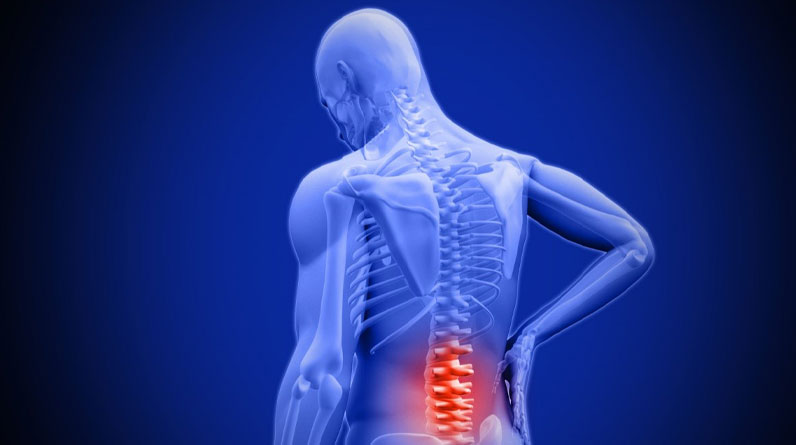
Bone Physiology
Bones provide structure to our bodies. They ultimately facilitate movement via lever mechanisms, protect internal organs, and act as an environment for mineral and cellular production. The adult human body is made up of a total of anywhere from 206 to 213 bones, deriving from an original bone count of 270 bones as children.
The necessity of bones and the importance of bone health can’t be understated. Having a general understanding of bone anatomy, structure, and mechanics will ultimately allow you to better understand your body and its purpose, thus encouraging a healthy lifestyle for longevity.
Doctors and biologists aren’t the only ones who can benefit from the knowledge of our bones and anatomy. Whether you’re a health & fitness enthusiast, nutritionist, health teacher, emergency aid, medical care worker, someone living with a chronic illness, or simply an individual living somewhat of a sedentary lifestyle, an understanding of the musculoskeletal system can benefit you greatly.
In what follows, we’ll be discussing bone structure, formation, and function, which includes information about growth plates and cellular makeup. We’ll also be discussing bone injuries and what force is required to break them. Lastly, we’ll be discussing the importance of maintaining healthy bones and how you can achieve it.
Bone Structure & Formation
Infants and children begin life with approximately 270 bones ranging from long bones, short bones, flat bones, and irregular bones. Beginning in the womb and lasting through the early stages of birth, bones begin as and are formed from cartilage.
As we age, the structure of our bones develops, hardening and calcifying over time until there is little to no cartilage left. This process is known as ossification.
The following is a list for reference describing bone composition:
• Cortical Bone: The hard outer layer that makes up the majority of the bone mass
• Trabecular Bone: The spongy-like, less dense part of the bone
• Bone Marrow: The soft tissue found in the center of the bone (note: red marrow vs. yellow marrow)
• Blood Vessels & Nerves
• Endosteum & Periosteum: Connective tissue that promotes bone growth & repair
The achievement of ossification, or bone formation, is a result of cells known as osteoblasts producing bone tissue which, over time, hardens and calcifies. Through several natural, biological processes, the bone is able to develop, grow, and maintain its form by transmitting cell fluid through the tiny canals of the bone.
During the course of one’s life, bones are constantly being formed and remodeled. With almost instinctual and reactive properties, the human bone has the innate ability to repair itself, become thicker for protection, and rebuild new bone tissue once damaged.
While this is certainly not a comprehensive description of bone formation, it’s a great start to understanding the intricacies of bone health.
What is a Growth Plate?
Growth plates, which are seen in adolescent bone development, are the cartilage layer found towards the end of long bones. Although the growth plate disappears once the bone reaches maturity, it plays an integral role in the development and formation of adolescent bone growth.
The role of the growth plate is so important, in fact, that the byproduct of injury or damage can result in uneven limbs, stunted growth, chronic pain, and debilitation.
A growth plate injury, though treatable, can be detrimental to a Child’s development if not treated in a timely manner. Upon a suspected injury, it’s imperative you involve medical attention immediately. Suppose that no apparent injury has been identified, yet you notice your child having difficulty when participating in sports or activities, or there appears to be a developing deformity of the limbs. In that case, this may be a sign of a growth plate fracture.
Common Symptoms of Growth Plate Injuries Include:
• Pain & Discomfort
• Compromised Mobility
• Swelling on the Joint
The most likely causes of a growth plate injury, though sometimes unidentifiable, are overuse injuries or collision-induced injuries.
The importance, then, of maintaining strong, healthy bones, not only in adolescence but in adulthood, is crucial for your health, well-being, and longevity.
Ways to Maintain Healthy Bones
The good news is that maintaining healthy bones is much like building strong muscles. With healthy lifestyle changes, following a proper diet, exercising, quitting bad habits, and implementing other preventative measures, one can ensure the best chance of optimal bone health.
While some causes of bone deterioration are uncontrollable (i.e., age, race, genetics, chronic conditions like thyroid disease, or certain medications), the large majority of cases are caused by poor lifestyle choices or lack of self-care.
The following are several helpful tips that you can implement today and in the future to ensure the maintenance of healthy bones:
• Follow a healthy diet rich in calcium, protein, and other vitamins and minerals
• Ensure adequate vitamin D absorption, whether through natural means (i.e., the sun) or via supplementation
• Exercise regularly and participate in weight-bearing physical activity
• Consider Collagen supplementation; a protein shown to support bone health and reduce bone deterioration
• Quit bad habits immediately (i.e., smoking tobacco, excessive alcohol consumption) and avoid toxic substance abuse
By consuming a diet rich in vegetables, protein, vitamin C, D, K, calcium, potassium, and omega-3 fatty acids, you’ll provide the necessary ingredients for excellent bone development. Also, by exercising regularly and ensuring a healthy overall lifestyle, you will be able to maintain a healthy weight, strengthen bones and muscles, and ultimately promote longevity.
Bones are a large part of the longevity of our physiological capabilities. After all, they are what provide our bodies with structure and fluid movement.
Final Thoughts
Bone health is imperative at all stages of life, from adolescence to adulthood to later age. Having strong, healthy bones provides us with the ability to move freely, support ourselves, and perform everyday activities with ease. It’s what prevents early-onset conditions like osteoporosis and osteoarthritis, and it’s what allows us to live pain-free.
The good news is that there are several controllable decisions that one can make on a daily basis to ensure the maintenance of good bone health.

